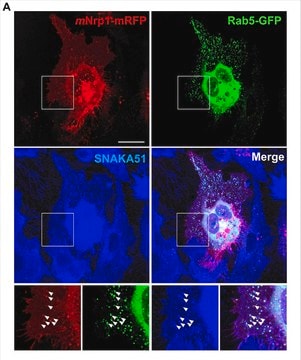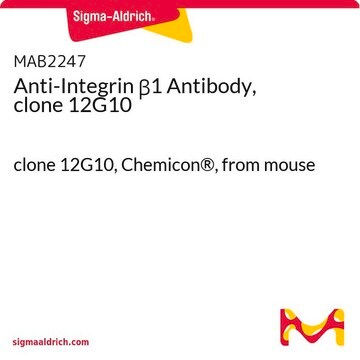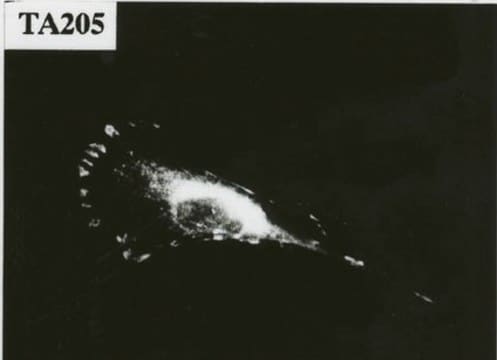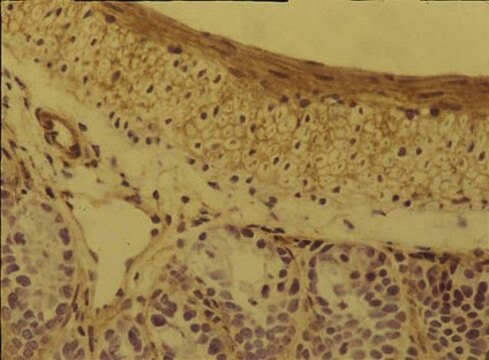AB1928
Anti-Integrin alpha 5 (ITGA5/CD49E) Antibody
CHEMICON®, rabbit polyclonal
Sinônimo(s):
CD49e, Fibronectin Receptor alpha Subunit
About This Item
Produtos recomendados
Nome do produto
Anti-Integrin α5 Antibody, CT, Intracellular, serum, Chemicon®
fonte biológica
rabbit
Nível de qualidade
forma do anticorpo
serum
tipo de produto de anticorpo
primary antibodies
clone
polyclonal
reatividade de espécies
human, chicken, hamster, rat, mouse
fabricante/nome comercial
Chemicon®
técnica(s)
ELISA: suitable
immunocytochemistry: suitable
immunofluorescence: suitable
immunohistochemistry: suitable
immunoprecipitation (IP): suitable
radioimmunoassay: suitable
western blot: suitable
nº de adesão NCBI
nº de adesão UniProt
Condições de expedição
dry ice
modificação pós-traducional do alvo
unmodified
Informações sobre genes
human ... ITGA5(3678)
Descrição geral
Especificidade
Imunogênio
Aplicação
1:1000 dilution of a previous lot was used.
ELISA:
1:500-1:2000 dilution of a previous lot was used in ELISA.
Immunoprecipitation:
Recommended use of 5 μL of antibody for 5x106 cells.
Immunohistochemistry:
1:1000 dilution of a previous lot was used in tissue staining; suggested for use on acetone fixed tissue only.
Immunocytochemistry:
1:1000 of a previous lot was used in immunocytochemistry.
Optimal working dilutions must be determined by the end user.
Qualidade
Western Blot Analysis: 1:1000 dilution of this lot detected integrin alpha 5 on 10 μg of HUVEC lysates.
Descrição-alvo
forma física
Nota de análise
Mouse 3T3 fibroblasts Skin (Basement Membrane).
Outras notas
Informações legais
Não está encontrando o produto certo?
Experimente o nosso Ferramenta de seleção de produtos.
recomendado
Código de classe de armazenamento
12 - Non Combustible Liquids
Classe de risco de água (WGK)
WGK 1
Ponto de fulgor (°F)
Not applicable
Ponto de fulgor (°C)
Not applicable
Certificados de análise (COA)
Busque Certificados de análise (COA) digitando o Número do Lote do produto. Os números de lote e remessa podem ser encontrados no rótulo de um produto após a palavra “Lot” ou “Batch”.
Já possui este produto?
Encontre a documentação dos produtos que você adquiriu recentemente na biblioteca de documentos.
Active Filters
Nossa equipe de cientistas tem experiência em todas as áreas de pesquisa, incluindo Life Sciences, ciência de materiais, síntese química, cromatografia, química analítica e muitas outras.
Entre em contato com a assistência técnica








